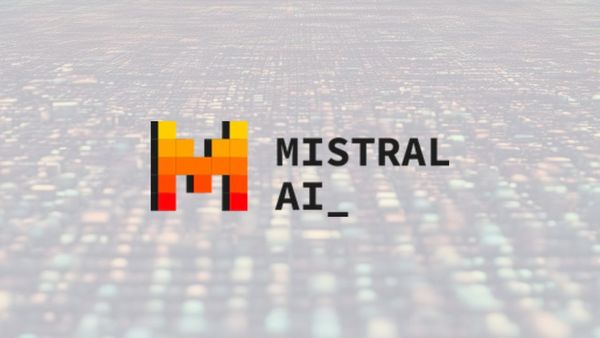Over the past months, there has been a slew of language models touted as “open-source” led by Meta’s LLama model and most recently Mistral’s Mixtral. However, brewing contention questions if these models qualify as fully open source. I take an in-depth look at this debate in this article.
The core question is whether simply releasing a model’s weights while keeping training methodology and data proprietary can be considered true open sourcing. As advanced language models like LLama and Mixtral demonstrate unprecedented capabilities, providing transparency into their development processes becomes critical.
By clearly delineating the differences between open weights versus full open source access, I establish a framework for evaluating claims of openness. Releasing weights allows models to be used but limits inspectability and community control. Offering open source facilitates decentralization but requires greater commitment.
As hype builds around supposed open source language models, this article helps the AI community critically examine pathways for responsible and aligned progress.
We must thoughtfully navigate tradeoffs around openness in this fast-moving domain fraught with risks as well as opportunities. The implications span innovation, trust, inclusion, and societal impacts.
Source code: Source code is human-readable, debuggable, and modifiable. It is the instructions on how to create a software or algorithm. In the context of AI, open source refers to the availability of the source code for modification and distribution
Weights: Weights are the output of training runs on data and are not human-readable or debuggable. They represent the knowledge an artificial neural network has learned. In the context of AI, open weights refer to the availability of these weights for use or modification
Open Weights vs Open Source for Language Models
When a large language model is released publicly, there is an important distinction between providing "open weights" versus making the model "open source."
Open weights refers to releasing only the pretrained parameters or weights of the neural network model itself. This allows others to use the model for inference and fine-tuning. However, the training code, original dataset, model architecture details, and training methodology is not provided.
The confusion arises because some people mistakenly refer to AI weights as open source (even I) when they are not source code. This is problematic because it leads to misunderstandings about the nature of these two different components
To clarify the terminology, it is proposed to use the term "Open Weights" for licensing related to neural network weights and "Ethical Weights" for a separate category of licenses designed specifically for weights
Releasing on an open weights basis allows broader access to powerful models, but limits transparency, reproducibility, and customization. Those using open weights models are relying on the representations and judgments of the original model creators without being able to fully inspect or modify the model.
In contrast, releasing a model as open source would entail providing the full source code and information required for retraining the model from scratch. This includes the model architecture code, training methodology and hyperparameters, the original training dataset, documentation, and other relevant details.
Open sourcing empowers decentralized progress as researchers can better understand, critique, modify, and build upon existing models. However, open sourcing requires significant additional effort and commitment for model creators.
So, open weights allows model use but not full transparency, while open source enables model understanding and customization but requires substantially more work to release. The choice between these two approaches involves important tradeoffs for both model creators and consumers.
The Critical Distinction Between Open Source and Open Weights
The distinction is important because the two approaches have very different implications for AI progress and responsible development. Releasing only a model's weights broadly enables application development but concentrates control among a small group of organizations. Enabling open source access distributes control but requires greater commitment to transparency and decentralization.
If only open weights are available, developers may utilize state-of-the-art models but lack the ability to meaningfully evaluate biases, limitations, and societal impacts. Misalignment between a model and real-world needs can be difficult to identify. However, with open source access, researchers across organizations can conduct rigorous audits of factors like fairness, safety, and robustness.
Furthermore, open sourcing empowers decentralized innovation. By providing the methodology and data used to develop a model, researchers worldwide can propose improvements, enhancements, and alternative development directions. Progress need not be bottlenecked by the comparatively small number of companies with resources to develop massive proprietary models.
As language models continue advancing, calls for openness will increase. But in considering any openings of access, we must thoughtfully navigate this distinction between open weights and open source. Only by recognizing the difference in transparency and distribution of control can we work toward responsible models aligned with the public interest.
Open Weights vs Restricted Weights
The terms "open weights" and "restricted weights" represent two distinct approaches to the distribution and usage of Large Language Model (LLM) weights. Understanding the differences between these approaches is crucial for developers, researchers, and users in the AI community.
Open Weights
- Definition and Access: Open weights refer to the model weights of LLMs that are made freely available with minimal or no restrictions. Users can access, modify, and redistribute these weights without significant legal or ethical limitations.
- Usage Flexibility: Open weights typically allow for a wide range of applications, including commercial use, academic research, and personal projects. This flexibility encourages innovation and experimentation within the AI community.
- Community Collaboration: The open nature of these weights fosters a collaborative environment where improvements and developments can be shared and built upon by anyone, enhancing the collective knowledge and capabilities of the field.
- Transparency and Trust: Open weights promote transparency in AI development, as users can examine and understand the model's workings. This openness can build trust and facilitate more informed discussions about the model's strengths and limitations.
Restricted Weights
- Definition and Control: Restricted weights are distributed under specific terms and conditions that limit their use. These restrictions can include limitations on commercial use, redistribution rights, and modifications.
- Protecting Intellectual Property: The restrictions are often in place to protect the intellectual property of the organizations or individuals who developed the model. This approach can ensure that creators receive recognition and potential compensation for their work.
- Regulatory Compliance: Restricted weights can also help in complying with legal and ethical standards, especially when the training data involves sensitive or copyrighted material. Restrictions can prevent misuse or misappropriation of the model.
- Market Differentiation: By imposing restrictions, developers can create specialized models for specific markets or applications, allowing for differentiation in a crowded AI landscape.
- Impact on Innovation: While restrictions can protect creators' rights, they may also limit the pace of innovation and collaboration in AI research. Restricted weights can create barriers for smaller entities or independent researchers who may not have the resources to comply with or negotiate the terms.
Comparison and Impact
- Innovation vs Protection: Open weights tend to encourage broader innovation and collaboration, while restricted weights focus on protecting creators' rights and controlling the model's application.
- Accessibility: Open weights are more accessible to a wider audience, fostering inclusivity in AI development. Restricted weights, by contrast, might be accessible only to those who meet specific criteria or agree to certain conditions.
- Community Dynamics: The approach to weights distribution affects the dynamics of the AI community, with open weights promoting a more collaborative and transparent environment, whereas restricted weights create a more controlled and potentially competitive atmosphere.
In conclusion, the choice between open and restricted weights involves a trade-off between fostering an open, collaborative environment and protecting creators' rights and interests. The decision impacts not just the accessibility and usage of the models but also the broader trajectory of AI development and research.
Towards A Framework for Openness
As the debate continues around language model openness, I propose establishing clarity by outlining levels of openness based on key criteria:
Transparency
- Access to model architecture details
- Training methodology and hyperparameters
- Data sourcing and processing information
- Documentation around development decisions
Inspectability
- Ability to evaluate model workings, biases, limitations
- Code modularity to enable audits of components
- Published model card detailing performance across tasks
Portability
- Availability of servable model without restrictions
- Option to run locally without proprietary dependencies
Modifiability
- Source code availability to edit, enhance, customize
- Redistribution rights without legal encumbrances
Using these criteria, we can evaluate language models across a spectrum spanning:
- Closed Models - Weights and usage access restricted
- Limited Openness - Weights viewable but details lacking
- Modifiable Openness - Weights and code editable
- Radical Openness - All source and data public
Mapping models onto this landscape provides dimensionality to navigate tradeoffs. Rather than binary "open or closed" thinking, we can reason about degrees of openness related to responsible oversight.
No definitive lines determine inherent virtue. But by framing the discussion this way, we enable more thoughtful open model development balanced with safety. Just opening weights risks unintended consequences from lack of inspectability. But full transparency could violate user privacy. This framework offers guidance for the community to align openness with public interest.








